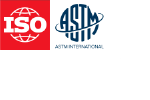Resumen
1.1 This document is intended to be used to assign part classifications across the aviation industries that use AM to produce parts.
1.2 This document is applicable to all AM technologies defined in ISO/ASTM 52900 used in aviation.
1.3 This document is intended to be used to establish a metric for AM parts in downstream documents.
1.4 This document is not intended to establish criteria for any downstream processes, but rather to establish a metric that these processes can use.
1.5 The part classification metric could be utilized by the engineering, procurement, non-destructive inspection, testing, qualification, or certification processes used for AM aviation parts.
1.6 The classification scheme in this document establishes a consistent methodology to define and communicate the consequence of failure associated with AM aviation parts.
1.7 This document is not intended to supersede the requirements and definitions of the applicable regulations or policies, including but not limited to the ones listed in Annex A1.
1.8 Tables A.1.1-A.1.3 align the existing regulations and guidance with the four part classes established herein. However, this alignment should not be construed as an alignment of the existing regulations to each other.
1.9 The material or process, or both, in general does not affect the consequence of failure of a part, therefore the classification scheme defined in this document may be used outside AM.
1.10 The user of this document should not assume regulators’ endorsement of this document as accepted mean of compliance.
1.11 This document does not purport to address all of the safety concerns, if any, associated with its use. It is the responsibility of the user of this document to establish appropriate safety, health, and environmental documents and determine the applicability of regulatory limitations prior to use.
1.12 This document was developed in accordance with internationally recognized principles on standardization established in the Decision on Principles for the Development of International Standards, Guides and Recommendations issued by the World Trade Organization Technical Barriers to Trade (TBT) Committee.
Informaciones generales
-
Estado: PublicadoFecha de publicación: 2024-10Etapa: Norma Internacional publicada [60.60]
-
Edición: 1Número de páginas: 11
-
Comité Técnico :ISO/TC 261
- RSS actualizaciones

